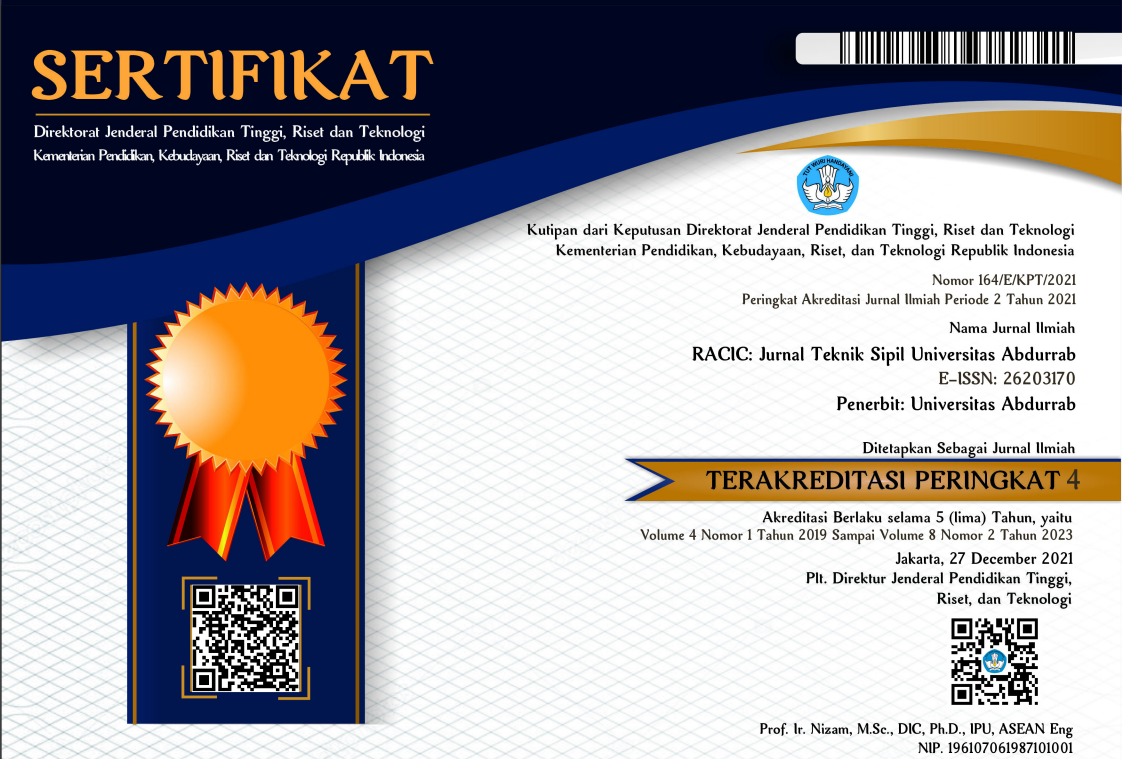POTENSI PENGENDALIAN ON STREET PARKING DI RUAS JALAN DAMAR KOTA PADANG
DOI:
https://doi.org/10.36341/racic.v5i1.849Keywords:
Road Capacity, on Street Parking Characteristics, and Level of ServiceAbstract
The Damar road section is a connecting lane for the Pasar Raya Padang area which starting to face parking problem. The indicator is the disruption of the flow and the high accumulation of parking volume on Jalan Belakang Olo section. These affected to the decrease on the level of the road services (LOS) on Jalan Damar Padang. So, the analysis of LOS, parking characteristics and parking management on Jalan Damar were carried out. The results of the parking characteristics analysis during the three days of observation showed that the average parking duration was 34-35 minutes, the maximum Parking Turn Over was 3.6 vehicles /day/space, and a maximum Parking Index was 84.91 %. The level of service level value indicated that the degree of saturation was 0.51 (DS <0.80) and it categorized to the B level; the flow classified stable with the average travel speeds ≥ 40 km / hr. The results of the traffic volume analysis trends and the volume of parked vehicles are contradictory. This could answer the question why that on parking activities the Jalan Damar did not caused a significant problem. Management of the on street parking through a Parking Meter Machine at this location is recommended. In the initial stage, the results of the parking characteristics analysis and the lay-out of parking lot can be offered. However, the further study will be needed to determined such as the vehicles growth rate and parking tariff to avoid the impact on the Level of Service.
Downloads
Downloads
Published
Issue
Section
License
1. Copyright of all journal manuscripts is held by the RACIC : Rab Construction Research
2. Formal legal provisions to access digital articles of electronic journal are subject to the provision of the Creative Commons Attribution-ShareAlike license (CC BY-NC-SA), which means that RACIC : Rab Construction Research is rightful to keep, transfer media/format, manage in the form of databases, maintain, and publish articles.
3. Published manuscripts both printed and electronic are open access for educational, research, and library purposes. Additionally, the editorial board is not responsible for any violations of copyright law.
licensed under a Creative Commons Attribution-ShareAlike 4.0 International License.





